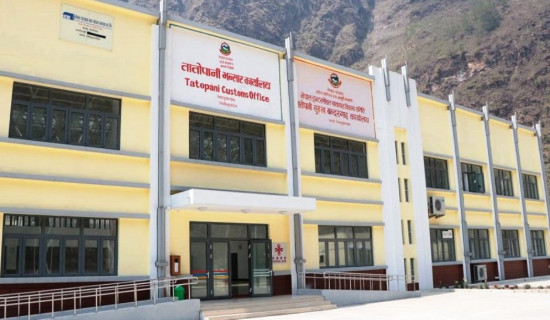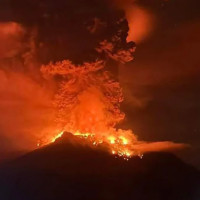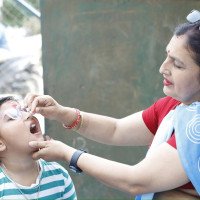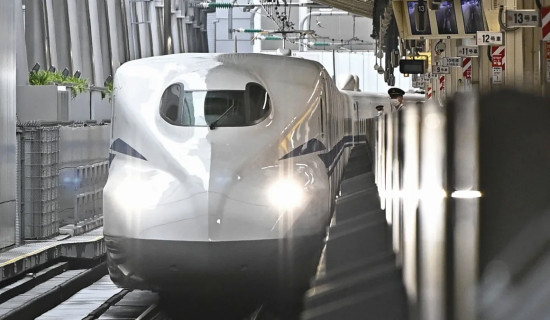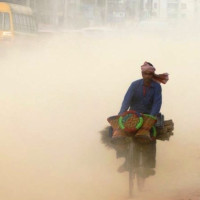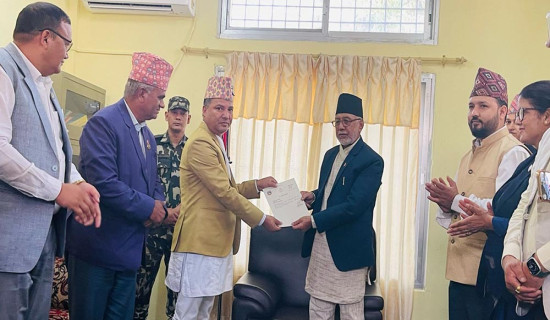- Thursday, 18 April 2024
Changes In Electoral System: A Milestone To Institutionalise Republican Setup
Periodic election is called one of the basic pillars of democratic governance. Democracy is neither imagined nor materialised in a particular country without holding periodic elections. However, the election of every democratic country should ensure its credibility by conducting the elections in a free and fair manner. The election of a country should definitely follow certain standards which are acceptable nationally and internationally. Nepal, a democratic republic, has observed significant change in electoral system in recent years. This article is a comparative analysis of major electoral shift after the People's Movement of 2006 which had built a strong foundation for the republican set up by overthrowing 240-year-long monarchy in Nepal.
Federal Democratic Republic of Nepal witnessed four periodic general elections from 2008 to 2022. Elections of 2008 and 2013 were held for the purpose of constitution drafting through the Constituent Assemblies. In a rare case, Nepal held two consecutive elections for the CA. The general elections of 2017 and 2022 were conducted for the implementation of the new constitution which was promulgated in 2015. Mainly, we observed two consecutive elections to the House of Representatives (HoR) of the Federal Parliament after the promulgation of the Constitution of Nepal, 2015.
Mixed electoral system
With the enactment of the Interim Constitution 2007 after the successful democratic republic movement in 2006, the nation shifted into mixed electoral system. The First-Past-the-Post (FPTP) and Proportional Representation (PR) electoral system were applied in the CA election in 2008. The elections to the constituent assemblies had not only ensured proportional electoral system but also implemented inclusion and participation of women, dalits and indigenous nationalities, differently-able persons and marginalised communities through the electoral system. Later, these practices of electoral system were upheld by the Constitution of Nepal, 2015. So, the HoR of the Federal Parliament is the outcome of mixed electoral system --- PR and FPTP. A total of 240 members were elected under FPTP category while 335 members were elected under PR category in the elections to the Constituent Assembly. The number of elected members of the House of Representative of the Federal Parliament constituted after the promulgation of the new constitution was reduced to 275. A total of 165 HoR members were elected under FPTP and 110 from PR.
Law enactment
Elections of two constituent assemblies were held under the same Act called Election to the Members of the Constituent Assembly Act, 2007 (2064) with some amendments while two general elections for the HoR were held under the same Act called Elections to the Members of the House of Representatives Act 2074 with some amendments or by introducing necessary bylaws and directives. Similarly, the Election Commission issued some rules, bylaws and directives to ensure free and fair election.
Electoral college
Management of electoral college is another feature of Nepali electoral system. The electoral college is managed to elect the President and Vice-President. They are the symbol of republican setup of the nation. Unlike previous monarchical system, a Nepali citizen can reach to the post of the head and deputy head of the state after being elected through the electoral college. As per the Article 62 of the Constitution of Nepal, the President is elected by an electoral college composed of the members of the Federal Parliament and of the provincial assemblies. A person who secures a majority of the existing votes of the electoral college is elected as the President. This provision is the replica of the republic Nepal, which was introduced through a long struggle and sacrifice of the people.
Federal setup
Federalism, a simultaneous agenda of republican setup, is also the outcome of the new electoral system that the nation adopted through the promulgation of the new constitution. It is also the outcome of mixed electoral system exercised by sovereign people. The unicameral legislature of the provincial assembly is also elected through mixed electoral system – 60 per cent under FPTP and 40 per cent under PR category. The combination and operation of three levels of government -- Federal, Provincial and Local -- is called federal system in Nepal.
Voters' turnout
So far as voters' turnout is concerned, the Election Commission data shows that the first CA witnessed 61.70 per cent under FPTP and 63.29 per cent under PR while CA of 2013 had 78.34 per cent under FPTP and 79.82 per cent under PR. A total of 68.76 per cent voters cast their votes in 2017 general election while total turnout of voters in 2022 election reached only 61.41per cent under FPTP and 61.85 per cent under PR category. Over 5 per cent votes remained invalid in 2008 election while the 2013 election witnessed 4.96 per cent invalid votes. Likewise, total 5.18 per cent votes remained invalid in 2017 and 5.06 per cent invalid in 2022. In this way, the ratio of invalid votes is somewhat similar in trend. However, the trend of voters' turnout is declining when we compare between latest two general elections.
Women's representation
The new electoral system not only guaranteed representation of marginalised communities, but also ensured one third women's representation in the Parliament. It is a mandatory provision through constitution and law. As per the Article 84 (8) of the Constitution of Nepal, women must constitute at least 33 per cent of candidates under FPTP and PR electoral system. A total of 191 women or 33.22 per cent were represented in the CA election of 2008, and 172 or 29.91 per cent in 2013 election. Similarly, 90 or 32.73 per cent women were represented in 2017 general election while a total of 33.10 per cent women were elected in 2022 general elections of the federal parliament.
Reform and strict compliance of law
Election Commission has a vital role in electoral reform making it more credible with highest democratic standard. As a constitutional body, it has the right and responsibility to make political parties accountable for credible elections. As major actors of election and electoral reform, the political parties should fully abide by the law relating to election.
However, the power politics plays its role in misinterpretation of law in favour of political parties. For instance, a directive was issued to maintain at least one woman candidate in the election to the post of chief or deputy chief of the local levels while filing candidacy in local level elections recently. However, the political parties did not follow the directive by taking advantage from the (mis)interpretation of law. They forged an electoral alliance which mainly affected representation of women at the local levels. Similarly, there are other issues like transparency and ceiling of election expenses of candidates which shall uphold the norms and values of credible elections.
In this backdrop, the regulatory body like EC and concerned stakeholders like political parties and political leadership should be fully aware of inclusion, representation and participation of women and marginalised people in the policy making level, which is the demand of the people's movement.
Republican setup shall be more strengthened by consolidating several democratic agendas to which people from all walks of life should pay attention to.
(Upadhyaya is Associate Editor at TRN.)



